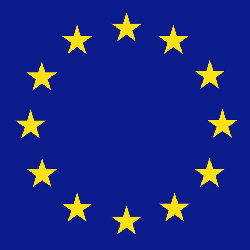Trust Estate
GUEST ARTICLE: EU's Trust Disclosure Rules - And Brexit

This article considers moves by the EU to shine a light on trust and company structures to find illicit financial transfers. The process has been complicated by the UK vote to leave the European Union.
This article explores ways in which the European Union propose to amend a directive that is designed to crack down on money laundering. In the UK’s case, of course, the vote on 23 June by the UK electorate to leave the EU potentially creates uncertainties, particularly given timetables. With that sort of consideration in mind, here is an article on the EU’s proposed trust disclosure rules. It is written by Camilla Wallace, partner in the private client team, and Edward Craft, partner in the corporate team, at Wedlake Bell, the law firm. The editors of this publication are pleased to share such insights with readers and invite responses.
Trusts in the UK have long been private structures, with
information on the terms, identity of beneficiaries and trust
assets only available to the settlor, trustees and certain
beneficiaries. But this looks like it is about to change.
On 5 July 2016, the EU Commission published proposed amendments
to the Fourth Anti-Money Laundering Directive. The AML Directive
includes provisions designed to increase the transparency of
companies, trusts and other structures in the fight against tax
evasion and terrorist financing, primarily through the
establishment of central registers of beneficial owners in each
member state. The AML Directive was originally adopted by the EU
in May 2015 and was due to be transposed into national law by 26
July 2017; however, the dreadful terrorist attacks in Paris and
Brussels have now shifted the landscape. The desire to tighten
the proposed rules on transparency has risen further up the
political agenda.
Trusts are included within the scope of the AML Directive;
however, under the 2015 adopted version, central registers had to
be established in relation to "taxable" trusts only, with the
information being accessible by government authorities or obliged
entities, not the general public.
The proposed amendments go further. They require beneficial
owners and controlling persons of "business-type" trusts to be
listed on a central public register in each member state, in a
similar manner as is proposed for companies. "Business-type"
trusts are broadly defined as those held by a person carrying on
a trust management business, which points towards any trust with
a corporate (or professional) trustee.
It is not proposed that non business-type trusts, such as those
with trustees acting in their personal capacities, will be
publically searchable in this way; but their details will
nevertheless be named on a central register available to
competent authorities (such as HM Revenue and Customs) and
parties with a "legitimate interest". The latter is likely to
include non-governmental organisations and potentially
investigative journalists. The central registries will be
connected EU-wide so that the information can be shared across
member states.
So what does this mean for trusts in the UK? It is difficult to
say with any certainty at present. Firstly, these amendments are
only proposals at this stage, but there seems to be a political
head of steam both in the European Parliament and with the
Council. Secondly, there is now the question-mark over whether
the UK will want or need to transpose any new directive following
the Brexit vote. The Directive is likely to be adopted before the
UK formally leaves the EU, but whether there is the political
will in the UK to abide by it, or the inclination of the EU
Commission to challenge the UK if it does not, remains to be
seen.
Regardless of Brexit, the UK has demonstrated its commitment to
the transparency of beneficial ownership information: it has led
the way in the corporate sphere with the introduction of
legislation requiring UK companies to maintain a public register
of "people with significant control" effective on 6 April 2016
and, although still an ongoing process, as at 8 July 2016 there
were over 28,076 beneficial owners on record. Further, on 14
April 2016, the UK Government issued a joint letter with the
other G5 nations making clear their commitment to establishing
central registers of beneficial owners of companies, trusts and
other structures. Notably, however, in the G5 letter, the
proposal was for information to be made available to tax
administration and law enforcement agencies, not the general
public.
This is a difficult and sensitive area. Trusts are
long-established, traditional vehicles for asset preservation and
wealth planning. In many cases, the rationale behind the trust
and who the trust is intended to benefit is extremely personal,
and if such information is to be made public, it could lead to
anxiety and be divisive within families - for instance where the
settlor has named beneficiaries whose identities he wishes to
keep private, as might be the case with illegitimate children, or
where children have been given unequal interests.
Concerns over privacy and safety where minor and vulnerable
beneficiaries are concerned remain (although the AML Directive
proposes to allow member states the ability to exempt data on
such individuals from being accessed in some cases). All of these
concerns need to be balanced against the advantages of increased
transparency against the use of companies, trusts and other
structures to hide financial crime. However, the vast majority of
UK based family trusts are set up entirely legitimately for asset
preservation or personal reasons, or even charitable aims.
The drive towards greater transparency is ongoing, and it looks
fairly certain that it will include trusts; but it remains to be
seen whether this is done under the European Union’s AML
Directive or bespoke UK legislation. For high net worth
individuals with trust interests, there is a lot at stake. With
the atrocity in Nice on 14 July, one expects such an appalling
event will only strengthen the resolve to get all information the
government believe they need into the hands of law enforcement
authorities.
